The most competitive Bitcoin mining operations today consist of entire warehouses of large ASIC miners usually located near sources of renewable energy or power plants selling off excess energy production for cheap. To get seriously involved in the Bitcoin mining space of today will require you to already be quite wealthy and to put up some *serious* cash.
But things were not always this way. I found a bunch of pictures in my photo library of my old mining rigs back from the dawn of Bitcoin ASIC mining and wanted to share them. Let’s go on a journey together back to the year of 2013 and explore what old school Bitcoin mining ASIC hardware looked like, how much it cost, and what we can learn from them today!
ASICMiner Block Erupter USB Sapphire Miner
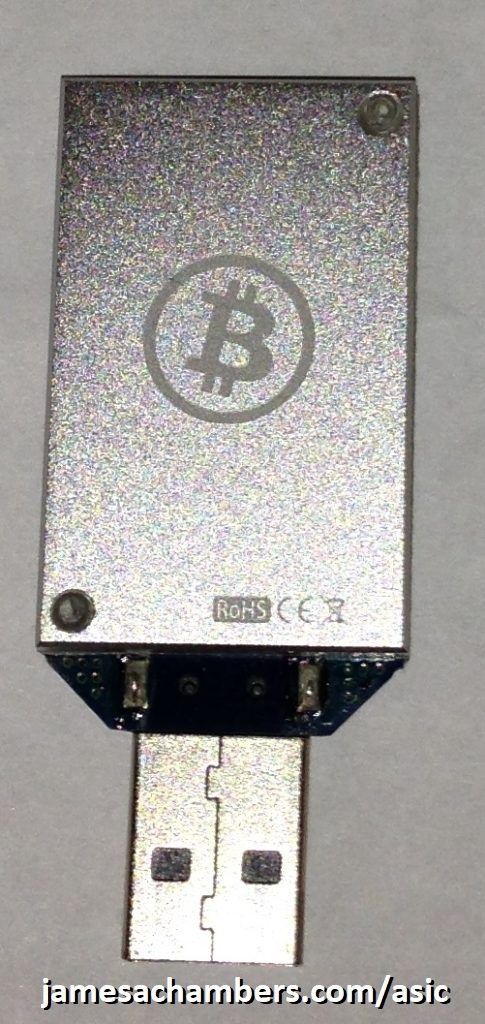
Our journey begins with the ASICMiner Block Erupter Sapphire miner. Although this wasn’t the first ever Bitcoin ASIC introduced it was the first one that wasn’t nearly impossible to get your hands on. This miner was powered by the BE100 chipset (ASICMiner’s first generation 1 chip). The mining speed of the miner was 330 MH/s.
Up until this point the Bitcoin ASIC market was filled with essentially scams. Butterfly Labs is an infamous example of this. They sold tens of thousands of preorders for a miner they hadn’t produced yet and strung people along for essentially years. They were finally shut down by the FTC in 2014.
In contrast to these previous offerings ASICMiner pushed enough real hardware in the market that ordinary people were able to obtain them for a reasonable price. How reasonable you ask? I dug through my old Gmail receipts to find this:
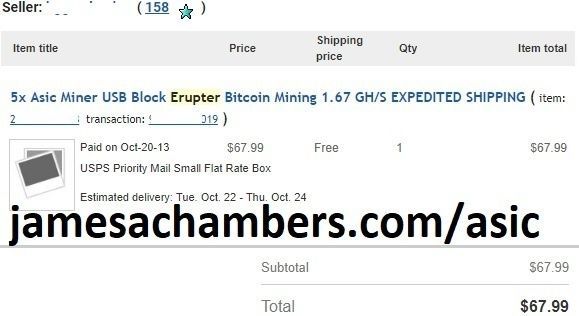
It looks like I was able to get them for about $13 a piece. This ended up being a real bargain as the demand for them skyrocketed as mining success stories started to come in. Once I started mining with Red Furies I sold these in December 2013 for $40 each or about $400 total after mining with them for a few months. This successful mining then flipping would set me up for trouble later (especially with the Gridseeds and the Cubes).
The Red / Blue / Ice Fury ASIC
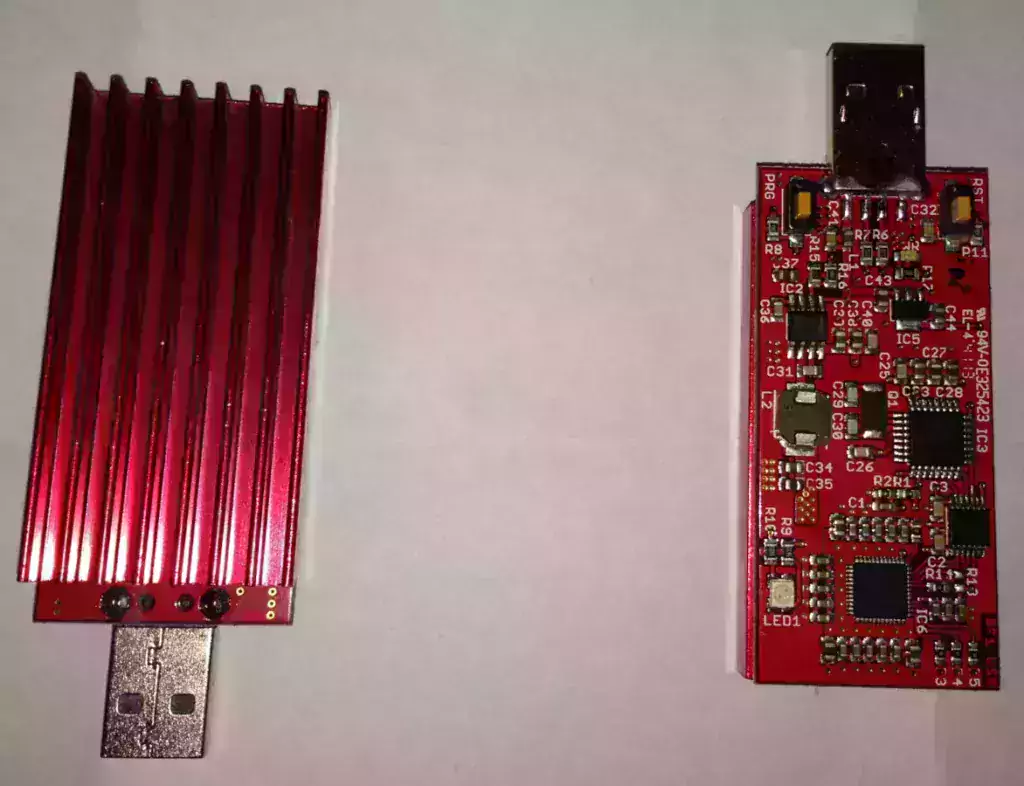
The Red Fury was the first batch of the Fury line and it came with a beautiful full size red heatsink. It was made by a company called the “Big Picture Mining Company”. The chip inside this was called the “BitFury” chip (thus the name). The BitFury chip would also be used in other ASICs including non-USB type ASICs.
At more than 10x the hash speed of a Block Erupter these were in very high demand and sold out very quickly. They cost about $100 a piece so they were not cheap compared to the Block Erupters. However since one of these had the power of 8 Block Erupters the price still seemed worth it at the time.
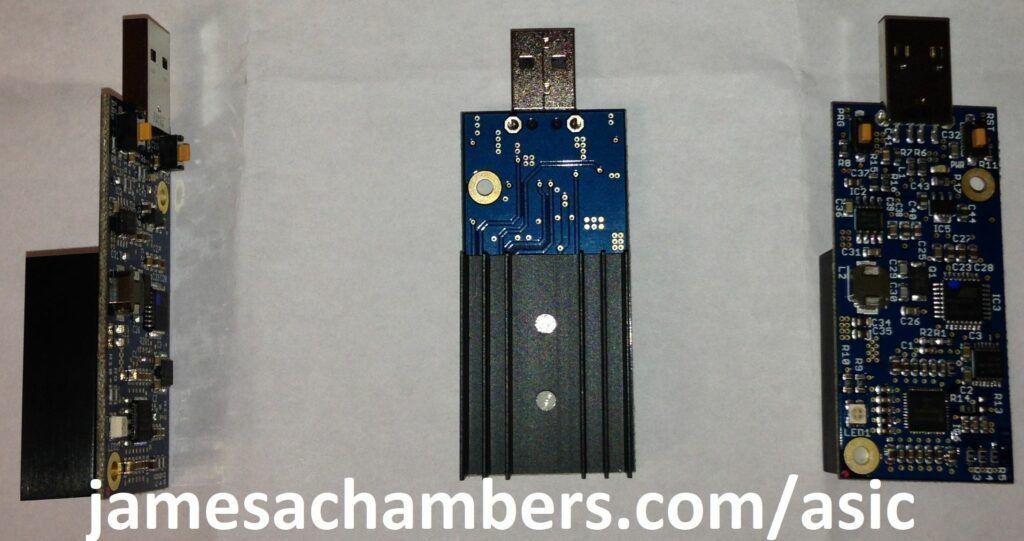
The next batch of the Fury miner was called the Blue Fury. Instead of having the beautiful full red heatsink like the red furies it had a half heatsink in plain black. These didn’t look nearly as cool and definitely were built in mind with lowering their manufacturing cost.
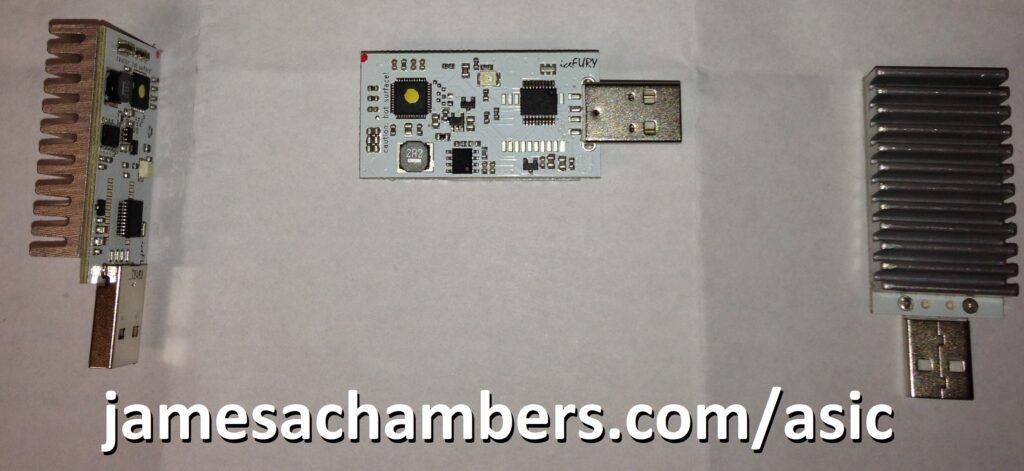
After the Blue Fury batches there were several other color variations made. I got a hold of a few Ice Furies which looked extremely cool with their shiny metal heatsink on a white PCB.
The Fury era was a good time for my mining as the giant mining whales had not come in yet and I was fairly competitive with this setup. I was also able to sell these at a profit in January of 2014 selling each Fury for $109 each due to ever increasing demand for ASIC miners.
Early ASIC Setups With USB Hubs/Fans
As more and more USB ASICs were acquired by early miners it quickly became impractical to plug them all into a PC. The miners also got very hot (hot enough to burn you in some cases) as these early USB miners only had a heatsink with no airflow. Thus the now legendary Raspberry Pi USB Hub ASIC Miner setup was born.
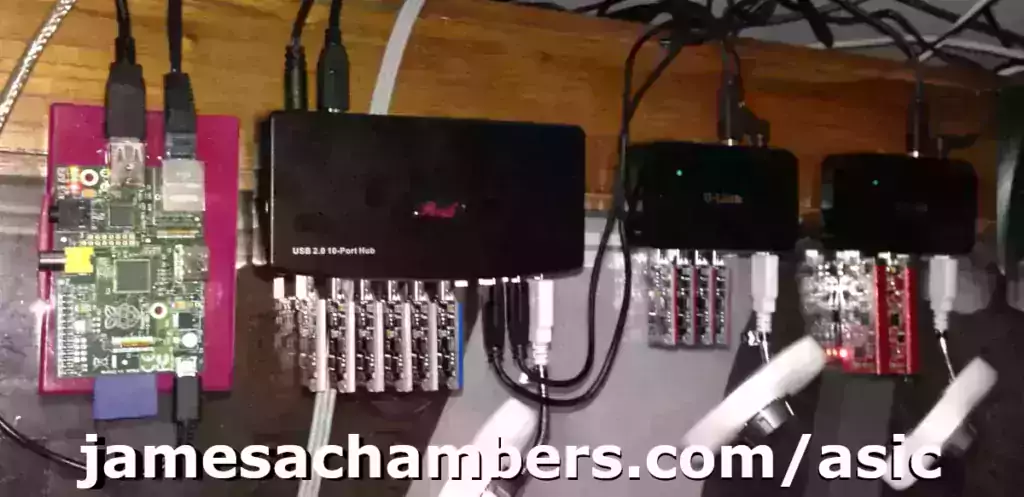
This is my very first early Bitcoin mining ASIC hub setup.
On the far left you can see an original Raspberry Pi generation 1 Model B. This was actually the very first Raspberry Pi I ever got and it was to run these miners! The Raspberry Pi acts as our PC so I was able to set up the mining rig out of the way and behind my TV in my living room.
The left and center powered USB 2.0 hubs are running Block Erupters exclusively. The right USB hub has my original 2 Red Furies in it. The total hashing power of this setup was about 8.5 GH/sec. This was a very respectable amount of hashing power at the time.
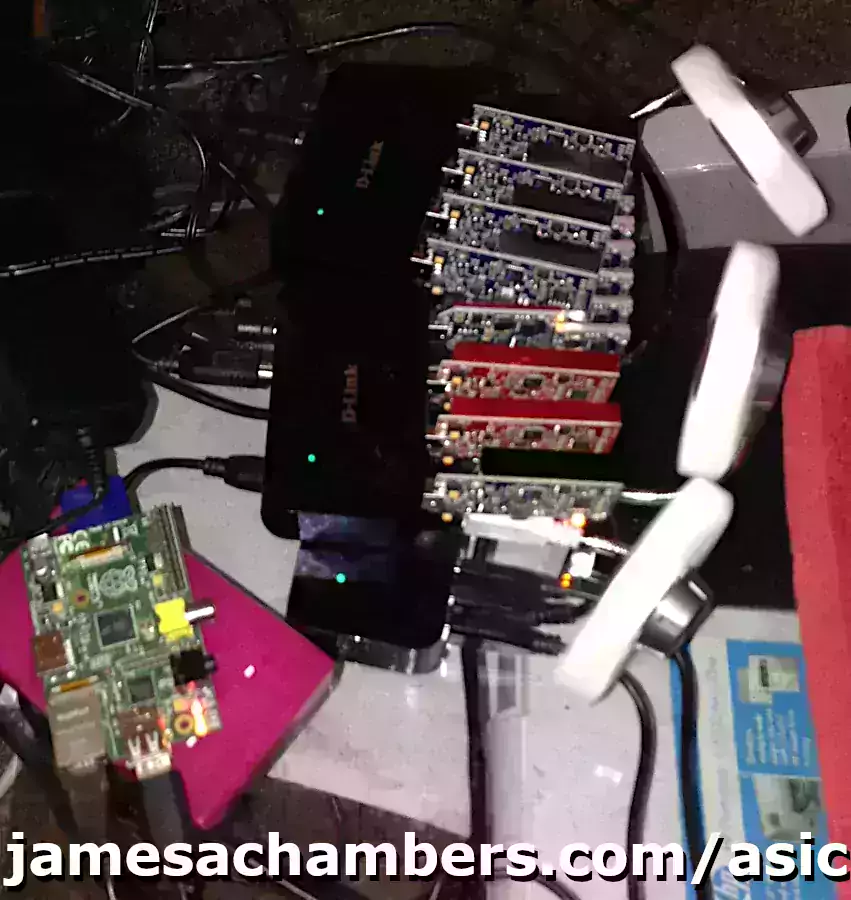
This setup has had 5 Blue Furies added to the original setup for another +13 GH/s bringing the total up to around 21.5 GH/s. I was also getting a little fancy here and stacking the hubs together so the setup was more compact.
Despite the impressive hash increase it would not last long as the next generation of miners were starting to hit the market. These miners were much more powerful and no longer relied on USB to power them which would bring an end to the USB hub/fan style of miners. Technology in the mining world was moving extremely quickly. I only had a setup like this for around 3 months before it was obsolete and time to upgrade!
Gridseed Scrypt Mining ASIC
The popularity of mining with ASICs had exploded at this point. Bitcoin’s difficulty was increasing exponentially and mining was getting more and more competitive. At the time it felt like if you weren’t already invested that you had missed the boat on Bitcoin ASIC mining. That’s why when Gridseed announced the first Scrypt ASIC (Litecoin being the primary one of interest) many miners were very interested in being the first generation of Scrypt ASIC miners and getting in at the ground level.
The Gridseed actually had a dual mining mode so it could mine both Scrypt and Bitcoin at the same time. The downside is that in dual mining mode both modes were a little bit slower so most people (myself included) ran these in Scrypt only mode since the Bitcoin hashing speed was already relatively insignificant at this point while the Scrypt speed was quite valuable. The cost of these miners in March of 2014 was a little bit over $200 each although they would drop dramatically in price before too long.
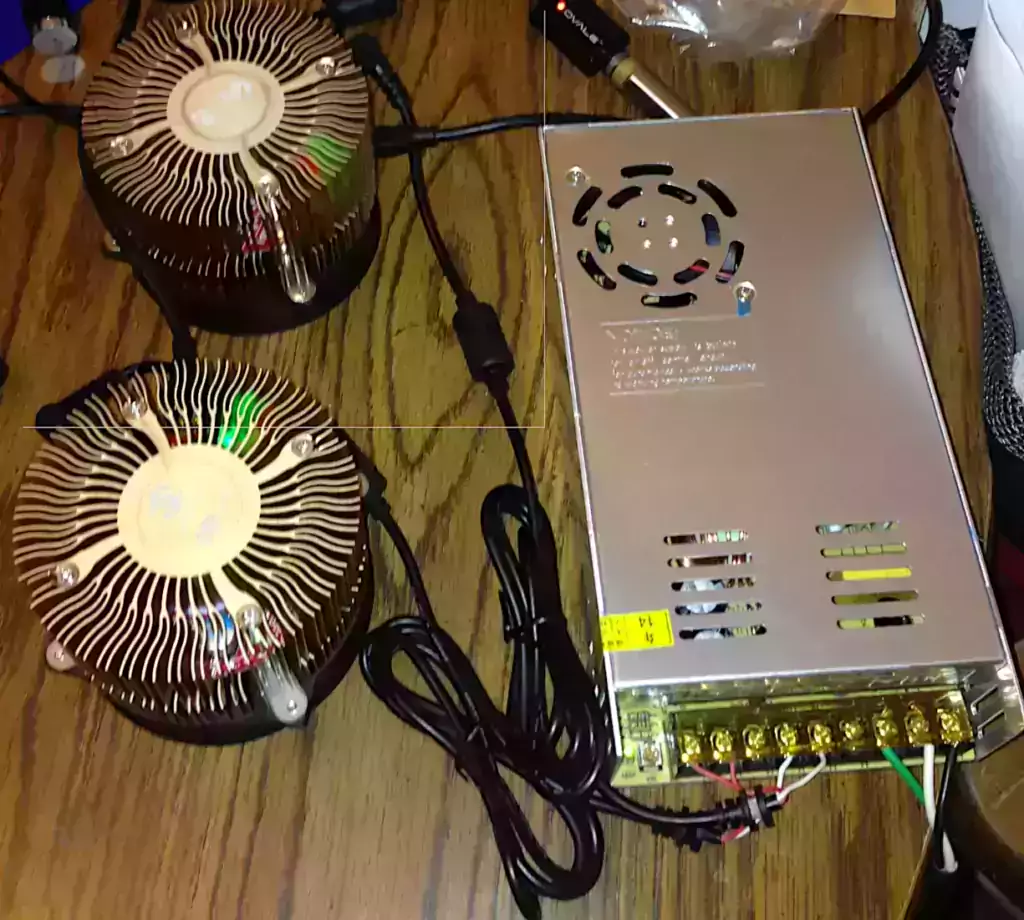
Gridseed ASIC Operating Modes:
- Scrypt mining: 360 KH/s @ 7 – 8 Watts
- SHA-256 mining: 11.25 GH/s @ 60 Watts
- Dual Scrypt and SHA-256 mining: 300 KHs Scrypt & 8 GHs SHA256 @ 60W
There were two ways to power the Gridseed miners. You could either use a normal barrel AC connections (took up one AC plug for each miner) or this super sketchy “official” power supply. The power supply came with exposed wire barrel connections that you would clamp a screw down over as seen in the picture. The power supply was supposedly more efficient than individual connections but the reason I chose it was that I didn’t want a whole power strip full of individual AC adapters for each one of these miners. I personally didn’t burn down my building with these but I’m sure somebody did!

I later added two more Gridseed miners onto the setup for a total of 4 bringing my Scrypt hashing power to a respectable 1600 KH/s after overclocking the Gridseeds to 400 KH/s each.
Unfortunately these ended up being a very poor investment as the pace of mining hardware had greatly accelerated by this point and I sold them for about $60 each in August 2014. They definitely did not mine me anywhere near the difference of the original $200 each being sold for $60 months later. My successful profitable mining and flipping of the Block Erupters and Furies definitely burned me here as these were very expensive at launch and nearly worthless in a few short months.
ASICMiner Block Erupter Cube
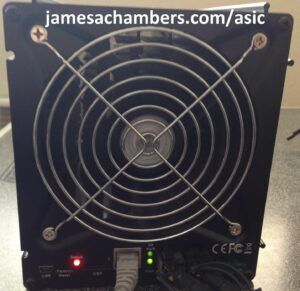
The ASICMiner Block Erupter cube was a huge leap forward in technology. This was actually a blade style miner. Inside the Cube are rows of blades. You can actually see the different blades in the picture above through the fan grating. Basically these blades were just hundreds of BE100 chips. The BE100 is the same chip that is in the Block Erupter Saphire USB miners above so basically ASICMiner took their huge stockpile of those aging chips and manufactured them into blades.
These units took traditional PCIE 6-pin connectors from a regular power supply which marked an end to the Gridseed loose wire style power supplies as practically all miners going forward used a standard PC power supply. It also had a built in Ethernet connection so it was no longer necessary to use USB hubs connected to a PC or Raspberry Pi. These units were completely self contained other than the external power supply.
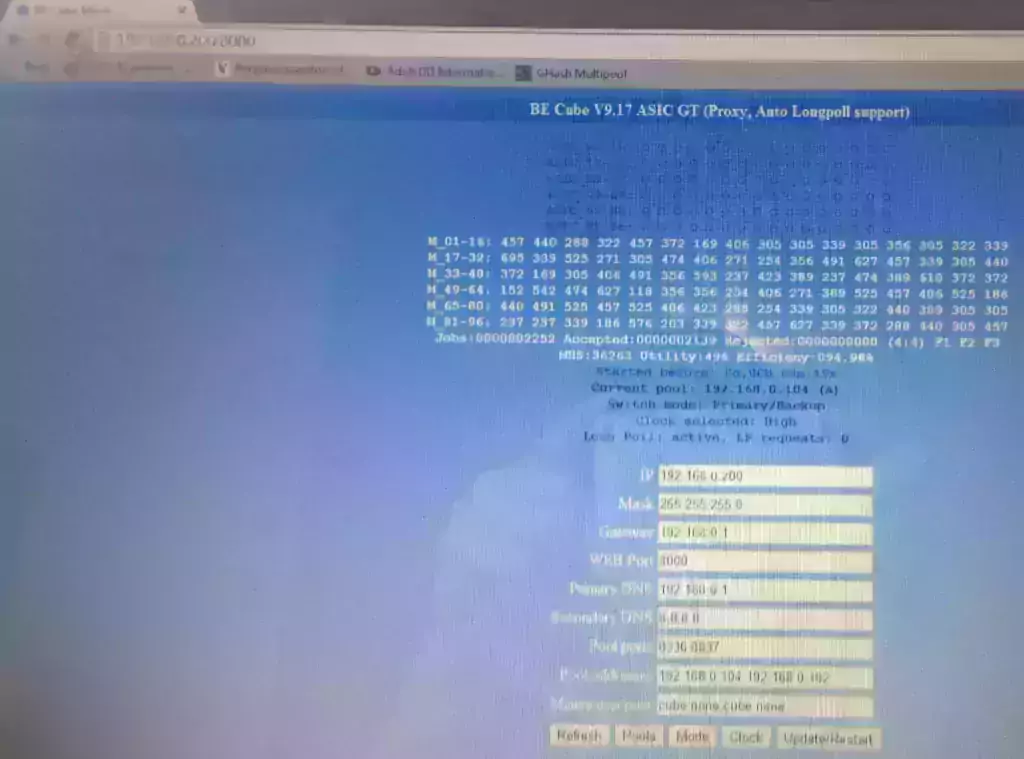
They also had a web interface! Although it may look like a World Wide Web 1.0 beta site it was actually pretty clever what they did with it. The rows of O at the top of the screen represent the different chips on the blade. If your unit was failing or some chips were not hashing they would turn to an X letting you know there was a problem. You could actually replace individual blades inside the cube in this unit if one of your blades went bad (usually from overheating).
You could also set the clock of the unit here. Low clock was 30 GH/s and the only people that used it are people with blades that couldn’t handle the high clock. There were cubes out there that weren’t capable of running on the high clock setting like mine were if someone got unlucky with the silicon lottery.
I had two Raspberry Pi Model Bs set up as the proxy pools so that I had a failover if one of the Pis crashed. The Pi and Raspbian weren’t as stable as they are today so it wasn’t too unusual for one of them to fail and need a hard reboot by pulling the power and plugging it back in. I ran two of these with 3 Gridseed units in this picture.
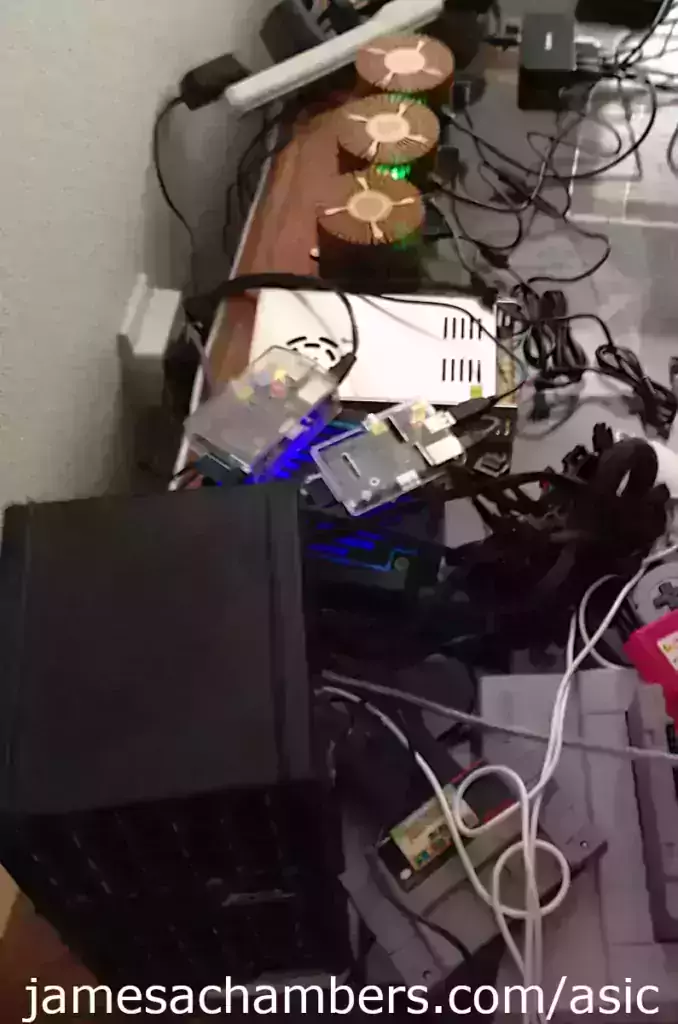
These units were typically sold in Bitcoin. I used some of my previous mining proceeds and bought one and still have the original transaction. The mining hash speed was great at release but it wouldn’t be long before the AntMiner S1 would make these look like toys.
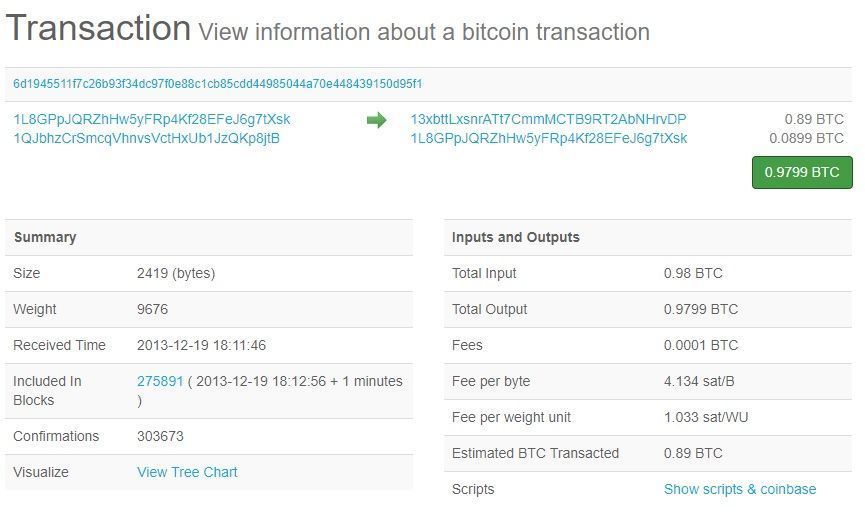
One Cube cost just under a full Bitcoin at the time. According to the historical Bitcoin calculator this was $620 at the time. Now just out of curiosity how much would that be worth now if I had just held my mining earnings?
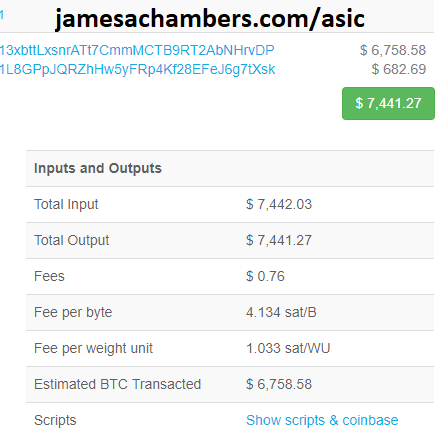
Make the pain stop…
Well there goes my Lambo payment! Bitcoin’s value has increased by more than literally an order of magnitude since this time. After mining with them for a few months I sold them on eBay for around $50 largely thanks to the AntMiner S1 making them totally obsolete basically overnight. What do you think about that Captain Picard?

AntMiner S1

We’re in the endgame now. The AntMiner S1 (top right corner) clocked in at a whopping 180 GH/s and 200 GH/s on high power mode. One AntMiner S1 had the power of roughly 615 USB Block Erupters. The AntMiner looks a lot like the newest miners do today. It has 2 blades with a heatsink and a large fan to push the air through.
As you can see in my picture things are starting to get a little out of hand. Behind my TV is an officially declared disaster area in this photo with ugly cables and equipment everywhere. Heat was a serious issue with the AntMiner. These things consumed 360W of power and put out an incredible amount of heat. At the time I was young and poor and this mining setup put out enough heat to make my living room in a tiny one bedroom apartment uncomfortable.
But oh the hash speeds! These units were very fast and reliable. I was still in the game at the time but AntMiner was already changing the mining game forever. They had a huge supply chain and would mine with huge warehouses of their miners to “test” them and their private AntMiner pool quickly became a juggernaut.
This was also when mining whales really began to take over the market. Big mining whales would buy hundreds or thousands of units and AntMiner had the supply chain to deliver to all of them quickly making home miners like myself irrelevent. AntMiner continues to be the most dominant mining company in the market to this day.
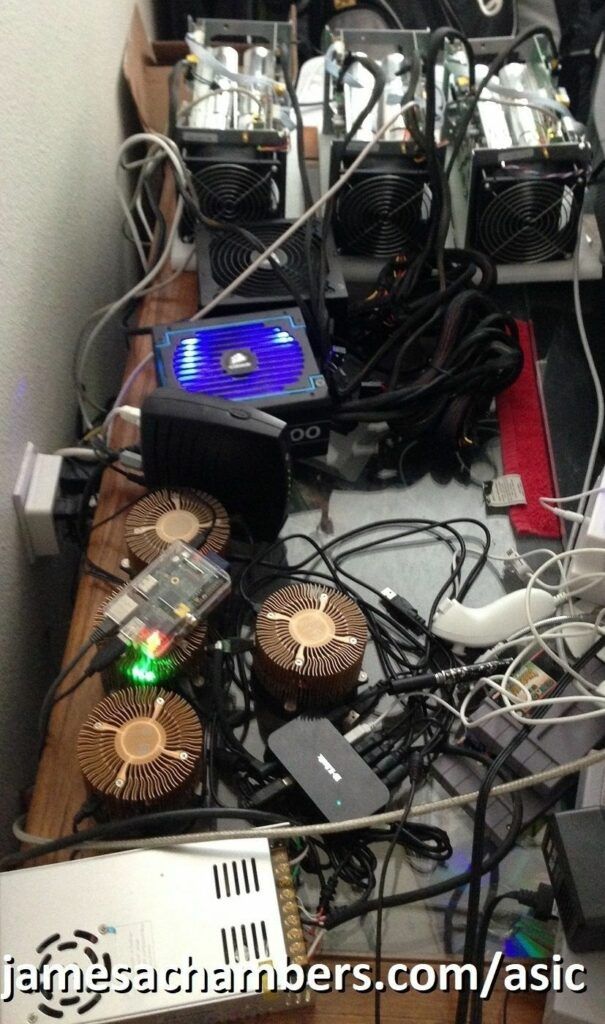
And yet I tried to persist anyways. Here is the pinnacle of my home mining career with 3 AntMiner S1s clocking in at 600 GH/s along with my 4 Gridseeds. At this time I would mine about 0.01 BTC per day. Now today that’s actually a decent chunk of money (about $78 at time of writing) but back then it was around ~$5 per day.
I purchased my first AntMiner unit for 0.91 BTC ($500) on March 25th 2014 and then second two for 0.45 ($200) BTC each in April.
After getting a few power bills for $300-$400 and having a living room with a temperature of over 95F I realized that at that point of my life I did not have the resources to become a Bitcoin mining whale. I sold my AntMiners after a few months for about $190 a piece. These miners were a break even if not a slight profit and definitely would have been profitable if I had the appropriate environment to run them in (something like a shed, garage, etc.).
Conclusion
Bitcoin has always been a very wild ride. Mining Bitcoin is basically that wild ride but on steroids. Not only are you subject to the wild swings in the Bitcoin price but you are also subject to which new mining hardware is coming out and whether your old miner will have any use or value after they do.
With what the price of Bitcoin has done it’s easy to conclude that my best course of action would have been to leave those miners on until they went out with a puff of blue smoke. But given that at the time it cost me more in electricity to mine and I took a loss on a lot of the miners from depreciation it was a rational decision for me to stop. The problem with that is that Bitcoin as a market has never been rational or rewarded rational decisions. The actual best decision (best meaning most profitable) would have just been to put all of that money I put into miners directly into Bitcoin and HODL. That’s right, the HODL crowd had it right all along!
Now just because I stopped trying to keep up with the arms race doesn’t mean I gave up! Today I still mine Ethereum and Monero in my garage and immediately exchange it to Bitcoin. I use my previous generation gaming cards (2x 1080s, 1x 1050 TI) as well as a few old towers CPU mining on Monero and just let them happily mine in the garage. I mine about 0.002 BTC per week (~$15). Even though that almost doesn’t seem worth it I have been around long enough to know that 0.002 BTC (~$15) may be $150 in just a few years if the trend of Bitcoin continues.
I may not have got my Lambo but I don’t regret playing in the Bitcoin arena at all. I have sold at the top of some bubbles and had some nice windfalls from it over the years that paid for vacations and things I had been saving for. But most of all for me the whole crypto experience is the pinnacle of techiness and nerdiness which makes it a lot of fun whether I make a profit or not. I will keep mining on a small scale for as long as the Bitcoin roller coaster continues!
Other Resources
For the best place to mine and exchange your altcoins check out my Best Altcoin Mining Pools and Exchanges article
To understand the situation with Ethereum mining see my Why GPU / Ethereum Mining Is Toast – Stop Buying GPUs article






Salut j’ai lue ton article super bien et j’avait un question avant d’inverstire car ont me vend cela
3 GRIDSEED 5
2 ANTMINER u3
2 clé usb ttbit ASIC
je mine avec une RX5700 et une Rx580 + AMD 3600 oc
ma question et je mine 80Mh/s plus ou moin
si je regarde et je compare n’importe le quelle sur le net de ces appareil qui font tous plus de 10Go, devais faire plus que mes 80Mh/s
je viens de commancer a miner et je ne voudrais pas acheter cela sans etre sur ??
Merci de ta reponse
Hey man, I tried sending you an email at remote@codemallet but it was returned to me. I followed the link to your personal site though and I’m trying to get through. Do you have another method of contact that is more reliable?
Hey Joe,
That should be fixed now, go ahead and send me a message